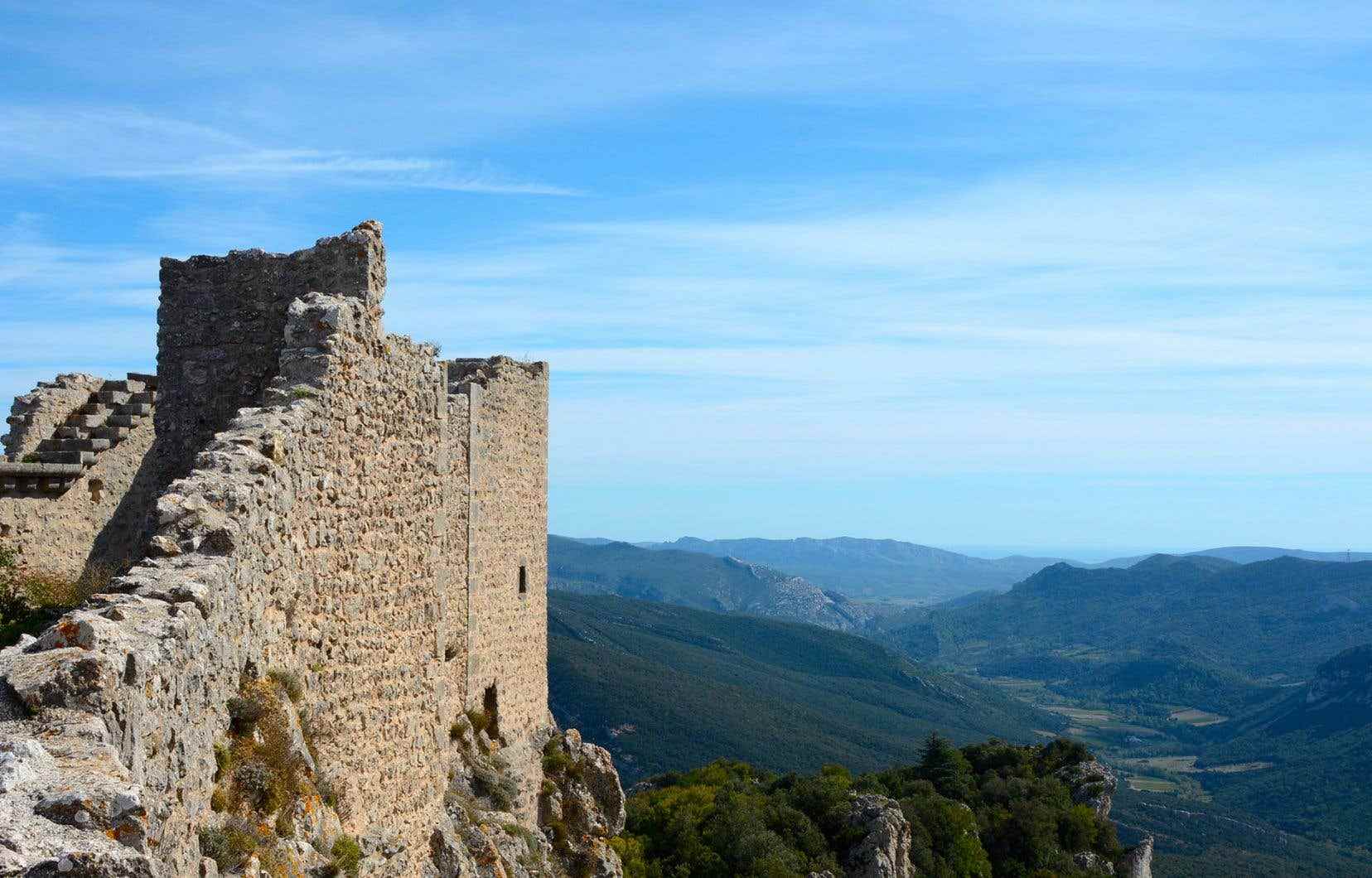This text is part of the special book Plaisirs
Located in the southwest of France, Occitanie is one of the most fascinating regions of this country. Between the Pyrenees and the Mediterranean, at the confluence of several Latin cultures, this territory was the privileged witness of the great upheavals that marked medieval Europe. We are taking you this week to these very accessible lands that are particularly pleasant to discover during the fall season.
Your adventure could start in the spectacular medieval city of Carcassonne. This fortified city, strategically built on top of a hill from which you can observe the whole region, has known a succession of masters over the centuries. Its first stones were laid by the Romans in 122 BC. But it’s really in the XIIIe century that it will know the beginning of its golden age, when it will represent the central element of the defensive system of the king of France, who wanted to protect his lands against the kingdom of Aragon, located further south. The Treaty of the Pyrenees, signed in 1659 and which formalizes the peace between these two powers, will however sound the beginning of a slow decline for this military unit which will lose its first defensive role. Abandoned, Carcassonne will then undergo a long decline and major physical alterations that will threaten its very existence. Fortunately, from 1855 to 1913, the architect Eugène Viollet-le-Duc will carry out major restoration work there which will restore all its brilliance to what is today considered the largest and best preserved medieval fortress in Europe.
You can explore its three kilometers of ramparts, its 52 towers, its drawbridges and its many barbicans. Then, inside the walled city, wandering through its narrow streets, you will get a good idea of how people lived centuries ago. A visit to the Saint-Nazaire basilica and the count’s castle, both frequented during the Middle Ages by counts, crusaders, princesses, knights and troubadours, will amaze you and offer you a total immersion in its glorious past.
A castle in the clouds
The second stop on your historical journey could take you to the Château de Peyrepertuse. Located nearly two hours from Carcassonne, this ancient castle in ruins clings to a limestone ridge that rises to 800 meters above sea level. Nestled in the middle of the mountains, in a wild and sparsely inhabited environment, it rises above the friendly village of Duilhac-sous-Peyrepertuse.
This immense military fortress, largely built between the 10the and the XIIIe century, was at the time as imposing as that of the city of Carcassonne. It was part of a group of seven fortresses (Peyrepertuse, Montségur, Puilaurens, Lastours, Termes, Aguilar, Quéribus), of which there are still vestiges today and which were erected on as many peaks in this magnificent region.
Accessible by stone stairs that were cut several centuries ago, this magical place will allow you to have a breathtaking view of the surroundings. A guide will also be able to describe to you in detail the turbulent past experienced by this highly strategic place where major clashes with the Kingdom of Aragon took place, which forever changed the destiny of France.
Fascinating reconstruction
By following the road which crosses pleasant villages, which skirts large vineyards and which flies over gentle valleys for 120 km, you will arrive at the Château de Foix, which dominates the town of the same name and whose construction dates back to the 12the century. By visiting the fascinating museum it houses, which reopened its doors in 2019 after major renovations, you can really understand what the daily life of the people who lived in this castle was like during the Middle Ages. A medieval forge, a stone quarry and even a garden have been reconstructed there. You can also stroll through the large banquet hall, the count’s bedroom, the arms room, the scriptorium or even the dungeon, which have been decorated and furnished as they were at the time. But the most impressive element presented by the castle of Foix is certainly the show on the weapons of war. Facilitators will show you how huge machines like the stone or the trebuchet, a gigantic catapult 16 meters high, which could send 100 kg balls over 200 meters away, worked.
Last stop
You can end your journey in the magnificent medieval village of Mirepoix, in the department of Ariège. Founded in the XIIIe century and inhabited today by just over 3000 inhabitants, it has many brightly colored half-timbered houses which are almost 500 years old and which, under the covered wooden galleries, house beautiful shops. The Saint-Maurice cathedral, in Gothic style, is certainly worth a visit. It was built between the XIIIe and the 19the century and has the widest nave in France and the second in Europe.
On Monday morning, a colorful and fragrant market takes over the central square. You can buy products from the region while telling yourself that the animation you observe is probably similar to that which agitated this historic city during the Middle Ages. Like what some things in our ever-changing world do not change.
Several airlines offer Montreal-Toulouse flights, including Air Transat, which offers a direct flight.
Our journalist was the guest of Atout France and the Occitanie Regional Tourism Committee.
